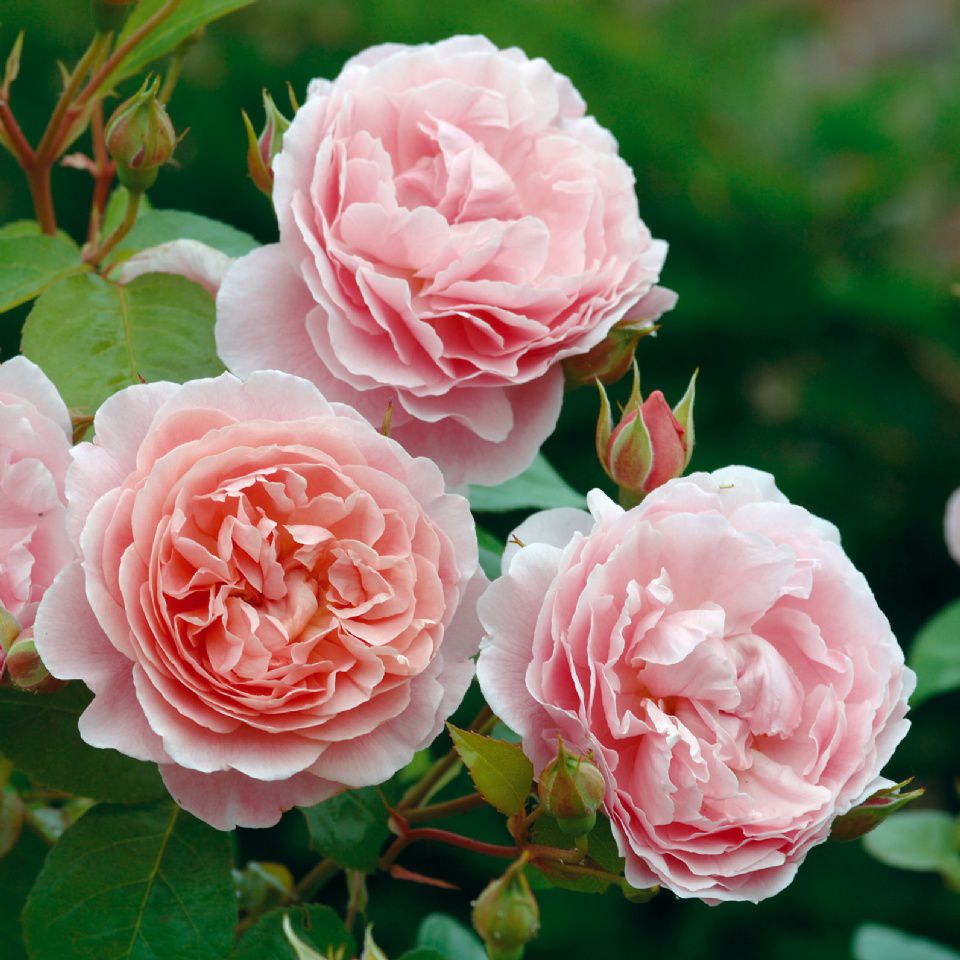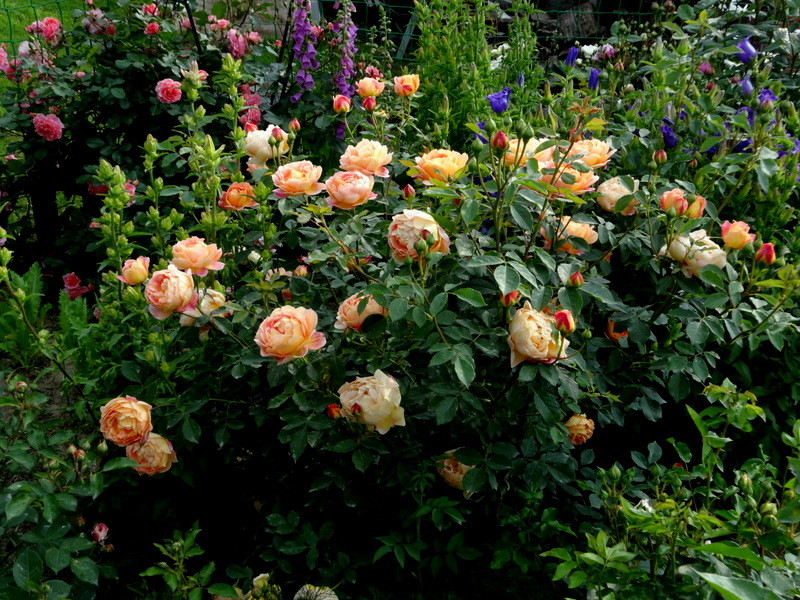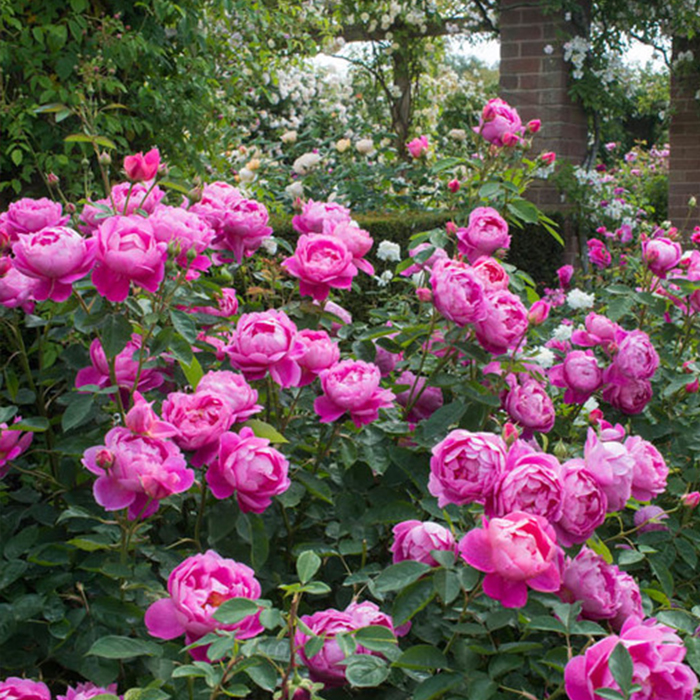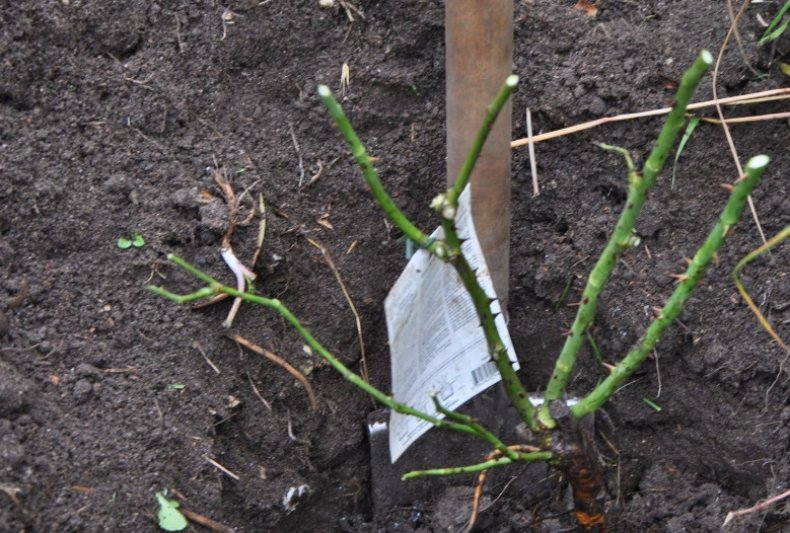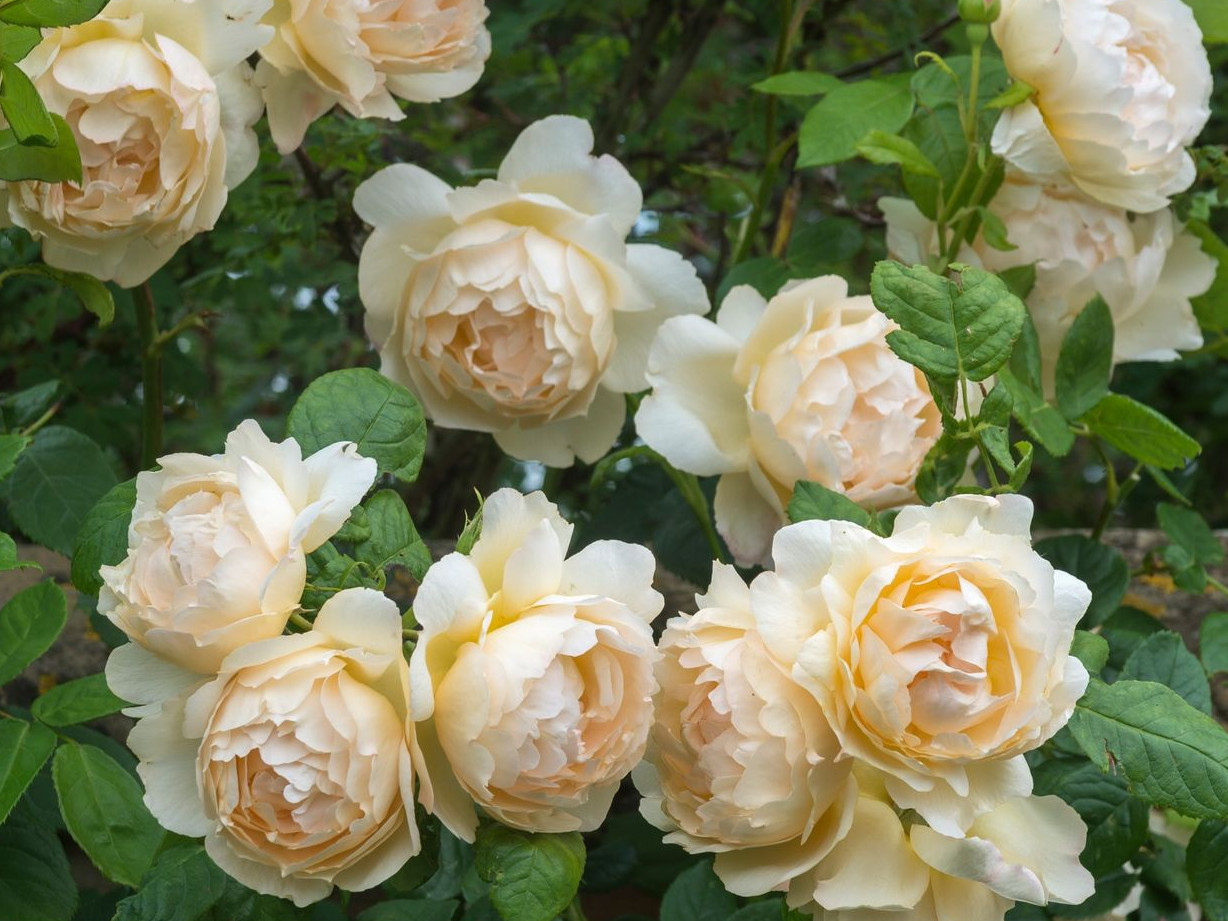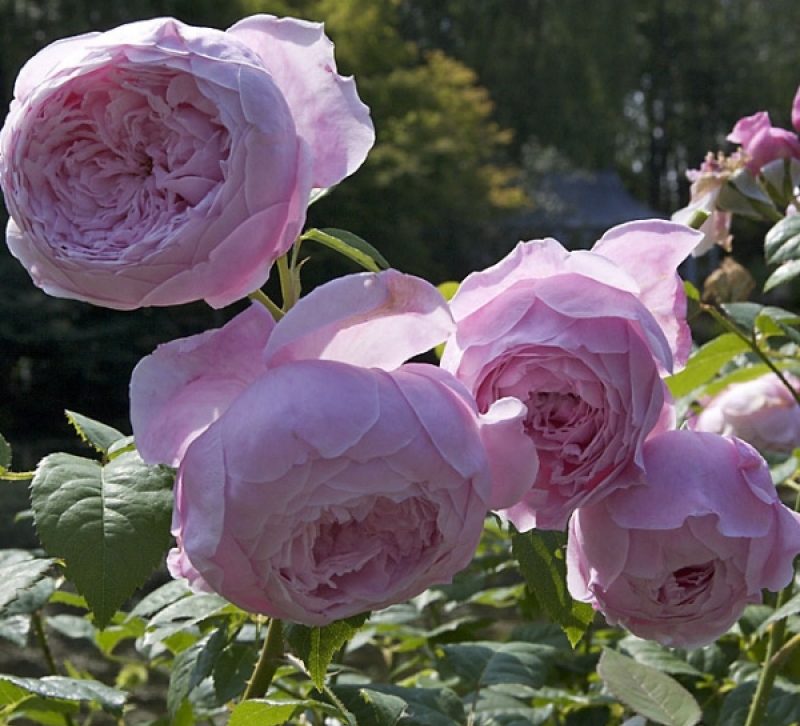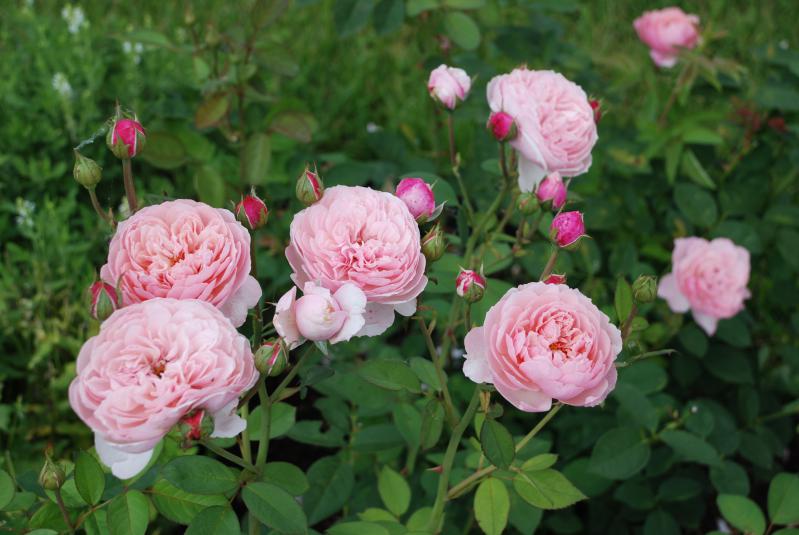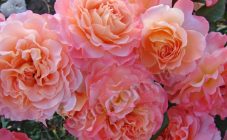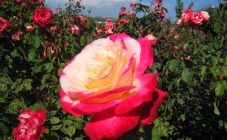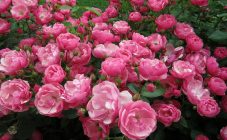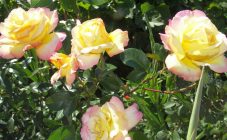Content:
The collection created by the English breeder David Austin is united under the general name Austin roses. His first variety, Constance Spry, he created by crossing hybrid tea and large-flowered multi-flowering roses.
Austin roses
The breeder was not satisfied that the Constance variety he had bred blooms once, so he continued to look for new crossing options. As a result of long and hard work, a whole series of original roses has appeared, which have received worldwide recognition.
Typical features of Austin roses
Ostinka roses have similar characteristics, they have:
- large flowers with a delicate aroma;
- flowers are collected in a brush;
- special bowl-shaped flowers;
- the flower thicket seems half-open;
- the height of rose bushes reaches 1.5-2 meters;
- flowers grow on short branches - stems, up to 6 cm long;
- prolonged or repeated flowering of the bush;
- resistance to infectious diseases.
Many varieties of the Austinos selection have received worldwide recognition and have been awarded by the Royal British Community. The Mayflower cultivar enjoys fame and good reputation. This garden culture is recognized by gardeners around the world. The variety is distinguished by long flowering, high immunity to infections.
In addition to Mayflower, high awards were given to:
- Evelyn,
- Iglantine,
- Pet Austin,
- L. D. Brightwhite,
- Golden Celebration,
- Charlotte,
- Molinex,
- Gertrude Jekyll,
- Graham Thomas,
- Septerd Eals,
- Mary Rose.
The best Austin roses - varieties and description
The varieties grown in the open air in an English nursery perfectly tolerate the climatic conditions of a temperate climate. Among them there are frost-resistant species suitable for growing in the middle lane and the Moscow region. There are especially frost-resistant crops suitable for growing in Siberia. British varietal plants feel great in the Crimea, Krasnodar Territory, Stavropol Territory and Rostov Region.
The following English roses by David Austin enjoy a good reputation among domestic gardeners:
- Lady of Shalotte
It is striking in its ability to endure frosty winters and resistance to infectious diseases.
The unblown flowers are bright orange. The flower cup has an average size of 8 to 10 cm. One stem can have 1 to 3 flowers. The aroma of the flower is complex, fruity notes with apple-clove shades are felt in it.
The rose does not require particularly difficult care; it can be recommended for beginner flower growers. It takes 5-10 days from opening to wilting of a flower. By the end of its flowering, a new shoot with buds grows next to the bush. With proper care and planting, the plant begins to bloom in the first year.
Bushes of the Lady of Charlotte variety are distinguished by high growth and strong branching. It grows well in the conditions of the Moscow Region, the Amur Region, the Khabarovsk Territory. In the southern regions, the buds open and bloom faster.The plant does not tolerate too hot climate.
- Golden Celebration
It grows well and blooms in the Volga region.
- Graham Thomas
A peony-shaped medium-sized rose of sunny yellow color. It meets all the characteristic features of English selection roses.
Rose Graham Thomas has large flowers, the diameter of which can reach up to 10 centimeters. The size of the bushes, of course, depends on the climate and conditions of care. Their height in a favorable growth environment reaches up to 3.5 meters.
Rose blooms Graham Thomas all summer, without interruption.
- Molyneux
Densely double, up to 150 petals in one flower. In the middle lane it grows up to 0.65 m, in the southern regions the bush stretches along the support up to 2 m.
The flowers are golden yellow with rich apricot markings. Usually Molineux is much more compact and blooms more profusely than Austin's early yellow roses.
- Mayflower
Typical Austin rose with medium double flowers.
The tall bush blooms until the very cold. Feels good in the conditions of central Russia. Possesses high frost resistance.
- Royal Jubilee D. Austin
Shrub rose that has become the breeder's calling card.
The culture is bred and named for the royal jubilee celebration. Very beautiful rose with large double flowers.
The petals are painted in a delicate pink color with a golden tint shining from the depths of the flower cup. Bushes from 1 m to 1.2 m in height. In the middle lane and to the north, the Royal Jubilee D. Austin shrub rose blooms in June. Flowering lasts until September inclusive.
- Mad gardener
A tall bush grows up to 3.6 m. Delicate pink flowers fade to white-pink shades. In the opened flower cups, golden stamens are clearly visible. The pink scent is subtle and memorable.
The Generous Gardener rose was named in honor of the 75th anniversary of the National Garden System, which made it possible to see many beautiful plants, including those from private collections.
- Rose london ay
An amazingly beautiful peony flower. Delicate pink double flowers have a sophisticated aroma with hints of lilac and almond.
- Rose Jane Austen
Light colored roses, very sensitive to frequent rains. Otherwise, the variety is excellent.
Gardeners note its high resistance to infectious diseases (powdery mildew, black spot).
- Graham Thomas
Depending on the climatic conditions of the region of growth, the bush has a height of 1 to 3.6 m.
Features of growing English roses
Roses from the David Austin nursery were created in a temperate climate. Sunny areas of the garden are suitable for them. In the southern regions, they will feel good in partial shade.
How to plant correctly
A rose bush growing in a sunny area acquires a rounded compact shape, in partial shade the rose begins to stretch upward towards the sun. In a well-lit place, the rose blooms continuously and profusely.
Roses are planted in spring or autumn. For the southern regions, autumn planting is preferable, since perennials do not have time to take root before the onset of heat. It is recommended to keep the seedlings in a root-forming mixture for 24 hours before planting. The bushes are planted half a meter apart. The best planting pattern for rose bushes is 50:50:50.
1 bucket of water is poured into the dug planting holes.The seedlings are placed in a hole so that the graft bud is deepened by at least 7 cm.
Watering and feeding
The first time after planting, the bushes need to be watered often and abundantly, and the ground around them should be loosened. British roses need to be well looked after, all manipulations must be performed accurately and in a timely manner.
Varieties such as Graham Thomas love moderate watering. They need to be watered when the topsoil around the bush dries up a little. The amount and frequency of watering depends on the region of growth.
Climbing and tall shrubs are pruned to your liking, giving them the desired shape.
Protection against diseases and pests
Almost all Austin rose varieties are highly immune to common infections. For example, Lady of Shalotte and Graham Thomas are completely immune to powdery mildew and black spot diseases.
For the prevention of diseases and pest damage, perennial plants are treated with protective chemicals. It is useful to periodically spray the pink bushes with infusion of garlic and onions. This method of protection makes it possible to feed the plants and protect them from infection.
Types and varieties of English roses
Several dozen British roses are suitable for growing in Russia. Depending on the conceived landscape design, varieties can be planted on the adjacent garden area:
- white and white-pink (Susan William Ellis, Desdemona, Tranquility, Pilgrim);
- red and crimson (Tez of Deberwils, Falstaff);
- pink (Jubile Celebration, Braze Cadfael);
- yellow (Crown Princess Margaret, Golden Celebration).
For lovers of fragrant flowers, breeders recommend some of the most odorous British varieties:
- Roald Dahl.
- Desdemona.
- Anciente Mariner.
- The Poet's Wife.
- Olivia Rose.
- Claire Austin.
- Golden Celebration.
- Jubile Celebration.
- Princess Alexandra Kent.
- Wolerton Old Hall.
Suitable for growing in semi-shaded gardens:
- Roald Dahl.
- Anciente Marinerfe.
- Desdemona.
- Albrighton Rambler.
- Claire Austin.
- Queen of Sviden Christina.
- Crown Princess Margaret.
- Wolerton Old Hall.
- Lady of Shalotte.
- Golden Celebration.
The best climbing roses of British selection, suitable for growing in Russia:
- Albrighton Rambler.
- Claire Austin.
- Crown Princess Margaret.
- Pilgrim.
- Wolerton Old Hall.
- Falstaff.
- Theses of Deberwils.
- Theazine Georgia.
- James Galway.
- Spirit of Freedom.
For small cut flower businesses, English breeders offer several dozen varieties suitable for this type of business. The most popular ones are:
- Anciente Mariner. Double pink flower with abundant continuous flowering.
- Darcy Bussell. Raspberry double flower with amazing fruity aroma.
- Eglentine. Strong double pink flower with continuous flowering.
- Golden Celebration. A very large flower with a calyx diameter of 14 to 16 cm. The petals are colored in all tones of yellow. Flowering is continuous.
- Jubile Celebration. A pink rose with a golden glow from the inside of the cup. Flowering is continuous. The flowers are large, 12-14 cm in diameter. The variety has an amazing aroma with strawberry notes.
- LD Brightwhite. The flowers are dark burgundy with a classic pink scent. Flowering is continuous.
- Queen of Sviden Christina. Amazingly beautiful pale pink flower. Resistant to frost.
- Theses of Deberwils. The petals are painted in carmine red shades. It smells like a classic pink scent. Resistant to powdery mildew and black spot.
- Alnwick Rose. A pink rose with double cup-shaped flowers. Blooms profusely and continuously. It smells like a fruity aroma with hints of raspberries.
How to choose roses for your site
It has been noted that Ostinos roses manifest themselves differently in each region. For example, growing in the middle lane, they show greater resistance to frost than expected by manufacturers.
The combination of flowers in a flower bed can be very different. The gardener can choose the bushes to his liking.
Modern landscape design offers many options for decorating personal plots and park areas, based on which the gardener can:
- limit yourself to a monochrome range and choose several varieties in one color palette;
- plant roses using the principle of color stretching from light to dark;
- create a composition of contrasting burgundy-crimson and white flowers.
When choosing the right plant for a summer cottage, you need to take into account its climatic preferences. Those flowers that grow well in the Kuban and Stavropol Territory are completely unsuitable for cultivation in Siberia.
The size of the area where the shrub will grow also matters. Some varieties of British selection at the age of 5-6 years have significant dimensions. For example, the tallest bushes can reach a height of 3.6 m, and take up to 2 square meters in width. m. For a park area, such a plant is ideal, but on a small lawn of a summer cottage it may not be appropriate.
